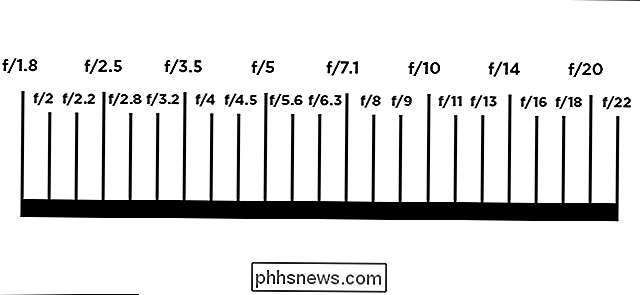- This directory contains binaries for a base distribution and packages to run on Mac OS X (release 10.6 and above). Mac OS 8.6 to 9.2 (and Mac OS X 10.1) are no longer supported but you can find the last supported release of R for these systems (which is R 1.7.1) here.Releases for old Mac OS X systems (through Mac OS X 10.5) and PowerPC Macs can be found in the old directory.
- Apple Mac Pro 'Eight Core' 3.0 (2,1) Specs. Identifiers: Mac Pro - BTO/CTO - MacPro2,1 - A1186 - 2138 All Mac Pro Models All 2007 Models Dynamically Compare This Mac to Others. Distribute This Page: Bookmark & Share Download: PDF Manual The Mac Pro 'Eight Core' 3.0, which identifies itself via a unique MacPro2,1 model identifier, is a custom configuration of the original Mac Pro.
- It is a conglomoration of NeXTSTEP, A/UX, and Mac OS 9. It is based off the unix kernel and provides compatibility with X11. It features a new theme called Aqua which replaces Platinum from Mac OS 8 and 9. It also adds the Dock as a place to launch applications (Not dissimilar to the underused Launcher) as well as some other features.

- installing using brew
- downloading a disk image
With more than 200 new features, OS X Mavericks brings iBooks and Maps to the Mac, includes a new version of Safari, enhances multi-display support, introduces Finder Tabs and Tags and delivers.
We describe both of them below.Installing using brew
Mahrud Sayrafi has created a homebrew tap containing a binary distribution of Macaulay2, which makes installation of Macaulay2 easy, once you've installed 'brew' according to the instructions at homebrew. Install Macaulay2 with the following command.
You will now find the program M2 in the directory /usr/local/bin (if you've installed homebrew in /usr/local, as they recommend), and it can be run with the command /usr/local/bin/M2. You may need to use this long form once to evaluate setup(), in case the command M2 runs a previously installed version; the settings take effect the next time you log in. (If you don't want /usr/local/bin added to your PATH by setup, then run the alternative command $(brew --prefix M2)/bin/M2 instead. The result will be that something like /usr/local/opt/macaulay2/bin is added to your PATH.)
If there are any problems with this procedure, please check the 'issues' at homebrew-tap/issues, and create a new one if you don't see a discussion of the problem you're having.
Downloading a disk image
Here are the downloadable disk images and their corresponding signature files (see PublicKeys); the name of the file incorporates the architecture and Mac OS version number.
- Macaulay2-1.17-x86_64-macOS-11.1.dmg, 152987672 bytes, January 8, 2021, .sig
- Macaulay2-1.16.99-x86_64-macOS-11.0.1.dmg, 138459363 bytes, December 12, 2020, .sig
- Macaulay2-1.16-x86_64-MacOS-10.14.6.dmg, 148026530 bytes, July 11, 2020, .sig
- Macaulay2-1.15-x86_64-MacOS-10.14.6.dmg, 145587560 bytes, December 9, 2019, .sig
Installation
After downloading, mount the disk image by clicking on it in your browser or by double-clicking on it in a Finder window. Then drag the Macaulay2 folder in it to somewhere else on your disk. One good location is your system Applications directory, at the top level on your main disk, and we include a convenient link to that directory within the disk image. Downloaded executable files are put into 'quarantine' by Mac OS, so we must release the files from quarantine with the following command (where '1.xxx' is replaced by the number of the version you downloaded.
Getting emacs
There are various options for getting emacs, with which Macaulay2 can be run.
- Use 'emacs for Mac OS X', available at http://emacsformacosx.com/. This is a native Mac application, with support for fonts, drag and drop, and cut and paste.
- Use 'aquamacs', available at http://aquamacs.org/. This is a native Mac application, with support for fonts, drag and drop, and cut and paste.
- Use /usr/bin/emacs: the problem with it is that it is not X aware, and thus must be run in a terminal window, and that is not good enough. (Running it in xterm, however, will be better than running in Mac OS X Terminal.)
- Compile emacs yourself from the source code available at ftp://ftp.gnu.org/gnu/emacs. You will also need to install X11, available, for example at https://www.xquartz.org/.
- Use 'homebrew' to install emacs: http://brew.sh/. You will also need to install X11.
Set up
Now arrange for Macaulay2 to set up your .emacs files and your command shell init files so that M2 will be on the path.
The easiest way to set up these files is to do the following in a Terminal window (the Terminal application is found in the Utilities folder inside the Applications folder. You might want to drag this application to your dock too).
First run the 'setup' command in Macaulay2 this way, replacing the path /Applications/Macaulay2-1.xxx appropriately:
After you log out and in again, your PATH will have Macaulay2's bin directory on it. The 'setup' routine will modify (some of) your shell command init files (such as .profile, .bashrc, .login, .cshrc), and your .emacs file. The existing files are backed up first. It also creates files .profile-Macaulay2, .emacs-Macaulay2, and .login-Macaulay2 in your home directory (making no backups of old versions), which do the actual work, including putting M2 on your path.
This allows you to run Macaulay2 by typing:
at a terminal command line, to access the info and man pages, and to use the Macaulay2 emacs interface.
Πr2 Mac Os Downloads
See also setting up the Macaulay2 emacs interface.
Πr2 Mac Os X
Try it out
Πr2 Mac Os Catalina
See the file ReadMe-MacOSX.txt for further installation instructions.